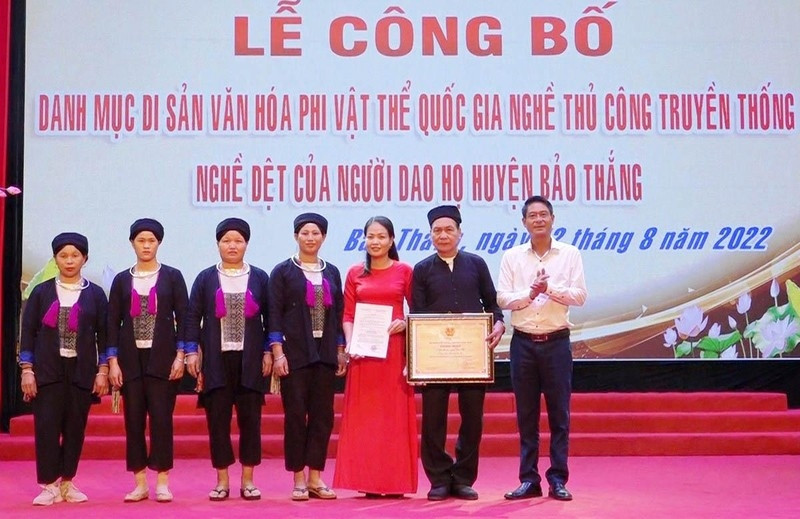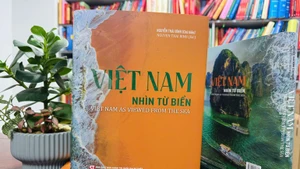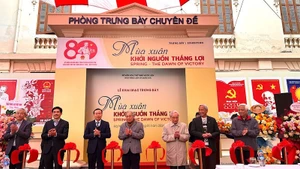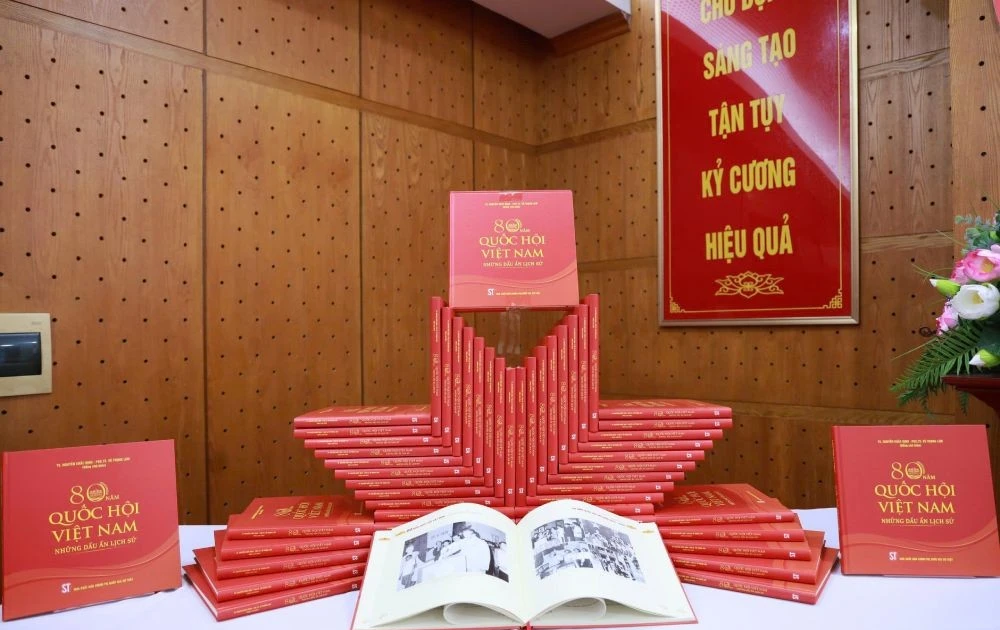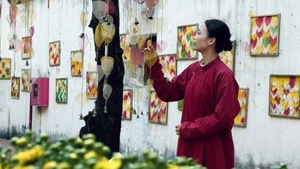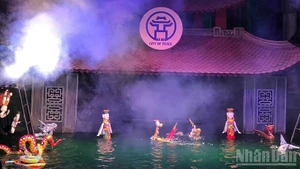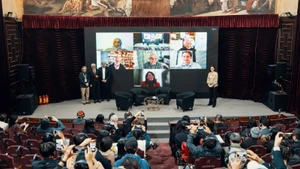The Dao Ho ethnic group accounts for more than 30% of the population of Bao Thang District (Lao Cai).
In order to receive the traditional weaving craft, the Dao people grow cotton, spin yarn and then dye it indigo with many unique crafts and techniques.
In the stages of making the costumes of the Dao, the most difficult is the "dyeing indigo" stage because it is both difficult and laborious. A cloth must be dyed about 20 times. Whether the fabric is soft and durable or not depends on the dyer's technique.
Embroidery also has its own patterns, and main colours in head scarves, shirt braces, bibs, belts, pant legs, leggings, bags, and scarves. All patterns are embroidered from the reverse side, without revealing any stitches.
According to Le Hai Thanh, Head of the culture-information office of Bao Thang District, now that the weaving craft of the Dao Ho people in Bao Thang District is recognised as a national intangible cultural heritage, the district will develop a detailed plan for each year to effectively implement the project on cultural preservation of ethnic minorities in the locality.

The weaving craft of the Dao Ho ethnic group in Bao Thang (Lao Cai).
To date, Lao Cai Province has 38 National Intangible Cultural Heritages, two of which have been added to the UNESCO Representative List of the Intangible Cultural Heritage of Humanity, including "Then practice of the Tay ethnic group" and "Tug-of-war games and rituals of the Tay and Giay people".
These heritages have promoted their values, becoming valuable resources in tourism development under the programme "turning heritage into assets" and contributing to socio-economic development in the locality.
